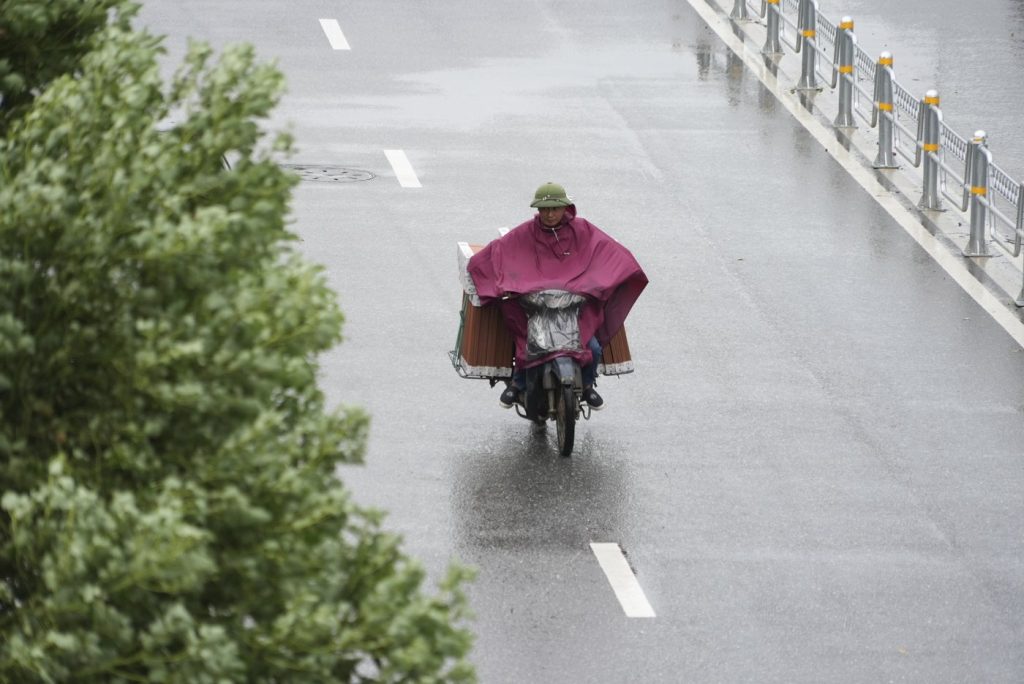HANOI, Vietnam (AP) — Tropical Storm Wipha made landfall in northern Vietnam on Tuesday, bringing with it strong winds and heavy rainfall that affected parts of the country's north and central regions. According to local weather officials, the storm came ashore at 10 a.m. with sustained winds ranging from 64 to 102 kilometers per hour (40 to 63 mph), and gusts reaching up to 138 kph (86 mph). After making landfall, Wipha began tracking southwestward.
The storm was classified as a typhoon while it was still over open water on Monday but was subsequently downgraded to a tropical storm as it approached land, indicating a weakening in strength. The impact of Wipha was felt significantly in Hung Yen Province, located east of Hanoi, where power outages were reported. Amid the storm, residents rushed to gas stations to secure fuel for generators, as state media highlighted the urgency of the situation.
In Hanoi, the capital city of Vietnam, the streets were nearly deserted as businesses shuttered their doors in anticipation of the storm’s inland movement. The city's municipal government has urged residents to stay indoors and evacuate from buildings that are either unstable or located in areas prone to flooding. Minh Doan, a taxi driver in Hanoi, noted the dangerous conditions, stating, “If the storm is serious, people shouldn’t go out anyway because it would be dangerous on the road and there is also a chance of flooding.”
The storm has also led to extensive flight cancellations across northern Vietnam, with airports in Hai Phong and Quang Ninh province halting operations for safety. State media indicated that nearly 150,000 hectares (370,000 acres) of aquaculture farms and more than 20,000 floating fish cages are at significant risk due to potential flooding and strong winds associated with the storm. The Vietnamese government has issued warnings concerning flooding as heavy rain from Storm Wipha continues to impact inland regions.
Meanwhile, in the Philippines, the aftermath of recent heavy monsoon rains has resulted in over 80,000 individuals seeking refuge in emergency shelters due to floods, landslides, and tidal surges experienced over the weekend. The government has closed most offices and schools in Manila and in ten surrounding provinces due to widespread flooding. Emergency services are actively engaged in evacuating residents from areas affected by knee- to waist-deep water, while the coast guard has deployed buses and boats to assist stranded commuters. At least three fatalities have been reported following these extreme weather events.
Experts attribute the increasing intensity and frequency of storms like Wipha to global warming. Benjamin P. Horton, dean of the School of Energy and Environment at City University of Hong Kong, explained that warmer oceans provide more energy for tropical storms, leading to stronger winds, heavier rainfall, and altered rainfall patterns across East Asia. He stated, “Rising sea surface temperatures, fueled by climate change, can intensify these storms.”
The significant impacts of Tropical Storm Wipha showcase the growing concern over adverse weather conditions in Vietnam and its surrounding regions, raising awareness of the underlying climate change issues contributing to such natural disasters.










